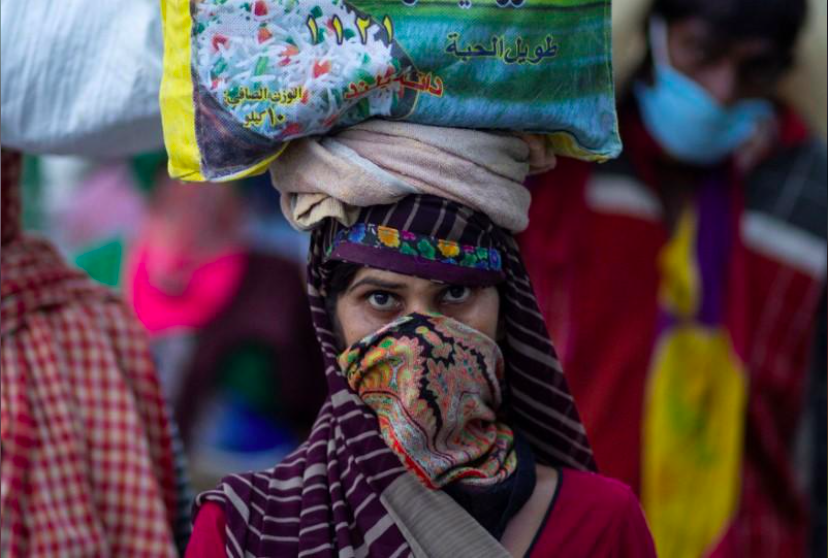The general understanding of COVID-19 infections in Maharashtra is that the locus of infections is shifting from urban locales to rural areas, as migrants move from the city to their homes, escaping infections and joblessness. The author argues that this may not be so. Data actually point to the Pune-Mumbai-Thane-Nasik industrial belt as being the COVID-19 belt of Maharashtra before and after the migrant movements.
———–
Is there a COVID-19 belt for the state? Or are COVID-19 infections spread across the state? This has become an important policy issue since the relaxation of the lockdown from 1st June 2020. Prior to this date, it was generally agreed that COVID-19 infections were largely concentrated around the Mumbai MMR region, Pune city, Pimpri Chinchwad, Thane. This area also constitutes the industrial zone of the state. The question that we ask is whether, after the lifting of the lockdown and migrant workers supposedly carrying infections to remote parts of the state, whether the locus of COVID infections is no longer dominated by this belt. This is an important policy question since state wide spread of the infection would mean that COVID-19 infections have to be tackled at widely varying locations. This would dilute the resources over a wider geographical area and make COVID-19 management that much more difficult.
In this note, we compare the major areas contributing to fresh infections on 28th of June 2020 with those on 28th of May. This will allow us to examine whether and how the major sites of new infections have changed geographically. The graph below gives the share of different areas (Municipal areas have an “MC” appended to them) in the state2 on 28th of June 2020. (The source of the data is the daily Report of Covid-19 cases that is issued by the Medical Education and Drug Department, Government of Maharashtra. This note uses the report for 28th June 2020.)
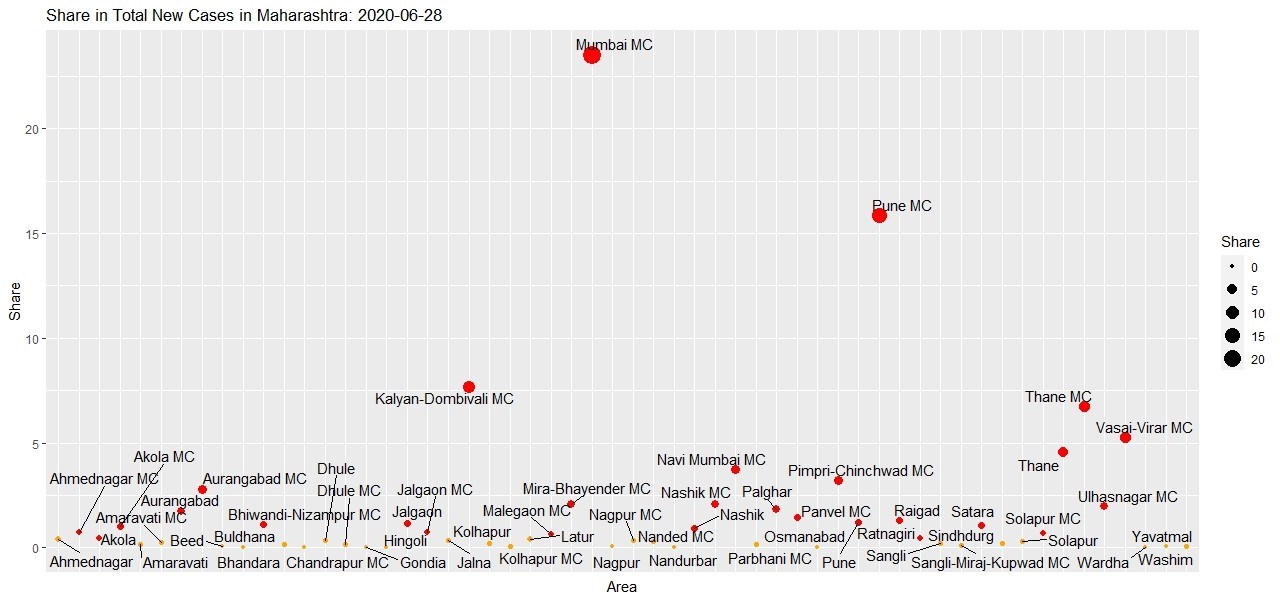

The graph has areas on the X axis and their shares in the new cases on 28th of June on the Y axis. The top 50% contributors are colored red. The others are colored yellow.
- Mumbai MC, Pune MC, Thane MC, Vasai-Virar MC and Kalyan-Dombivali MC together account for a little over 46% of the cases in the state. The Pune-Thane-Mumbai-Nasik urban belt continues to be a major contributor to new COVID -19 infections in the state, accounting for over 50% of the new infections.
- 28 areas constitute the top 50 % contributors. 19 of these are Municipal Corporation areas while the remaining 9 are not. Though most municipal corporation areas are in the top 50% contributors, Chandrapur, Nagpur, Nanded, Kolhapur, Sangli-Miraj-Kupwad, Parbhani are in the lower half of the contributors. There is no necessary association between an area being a municipal corporation area and it’s being a relatively large contributor to new cases, but large municipal corporations continue to make large contributions to new cases.
- On the other hand, no-municipal areas of Thane, Satara, Palghar, Jalgaon, Aurangabad, Akola, Raigad, Nashik are also in the top 50% contributors.
- The share of Mumbai has been falling. On 28th May 2020, Mumbai’s share in total new cases was 54%. A month later, it is 24%. The contribution of various areas on 28th May 2020 is shown in the next graph.
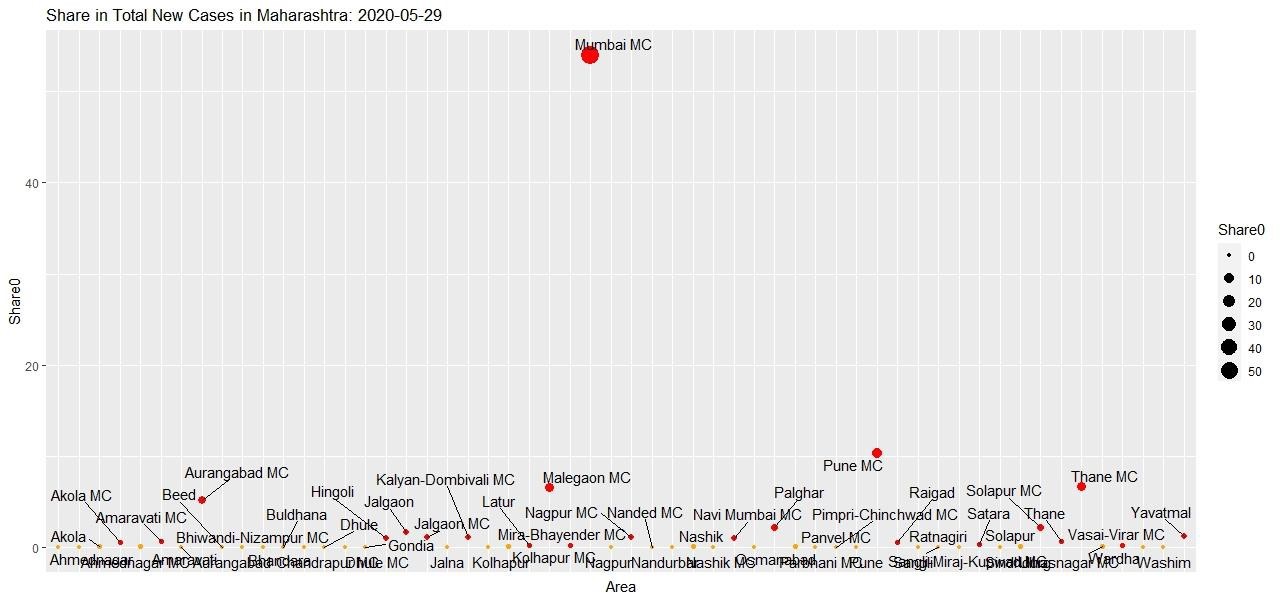

From this graph, one can see that Mumbai was an outstanding contributor and single-handedly generated more than half of the cases. The remaining cases were distributed more or less evenly across the state, with Pune Municipal corporation a little higher than the rest, but yet not a significant contributor by itself.
How have the shares of fresh cases of different areas changed over the month? The following graph shows this:
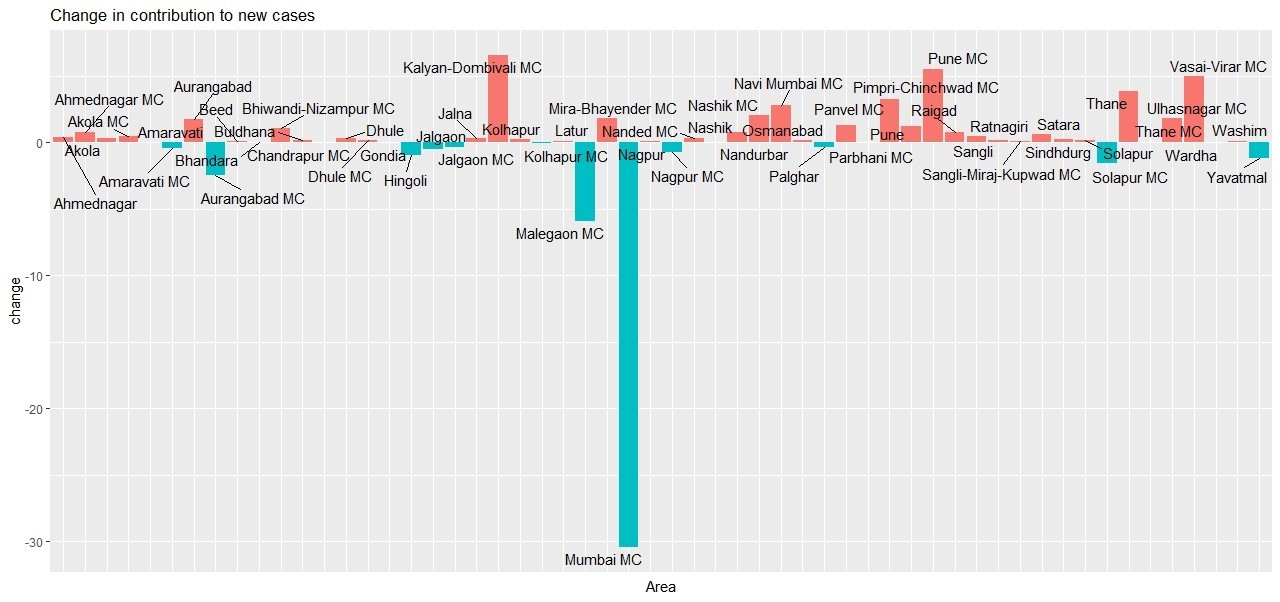

As one can see, the share of Mumbai Municipal Corporation in fresh cases has dropped the most, followed by Malegaon. Kalyan-Dombivali, Vasai-Virar, Pune MC, Pimpri Chinchwad MC, Navi Mumbai MC are the major gainers. This again highlights the fact that the urban industrial belt of Pune-Mumbai-Thane-Nasik also remains the COVID-19 belt for Maharashtra. The loss of Mumbai’s share has been more or less made up by the increase in the share of other administrative zones in this area. This implies that it is still the industrial belt in the state that continues to generate fresh cases. New cases are not predominantly coming from Konkan, southern Maharashtra, Vidarbha or Marathwada. These areas are major feeders of the working population into the city, and have seen an influx of migrants. But the locus of new cases is not these migrant supplying areas but continues to be largely dominated by the Pune-Mumbai- Nasik-Thane belt.
The last question that we ask is whether the areas that had a high number of infections a month ago actually grew less slowly over the month relative as compared to areas that had a small number of infections a month ago. If the answer is yes, it would mean that areas that were heavily infected a month ago are now growing more slowly while the areas that were not infected in the past are growing faster now. This would indicate that the locus of new infections is now shifting. Statistically, what one would expect is a negative relationship between the number of infections on 28th of May and the growth rate between 28th of May and 28th of June. The next graph studies that relationship.
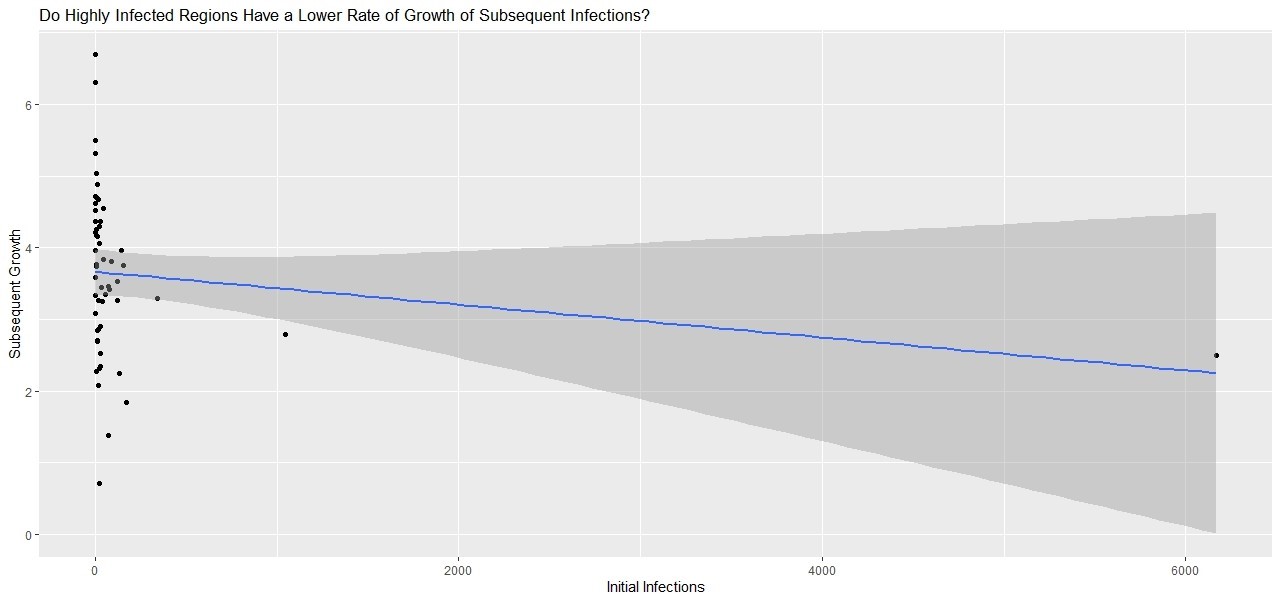

As one can see, there is a weak negative relationship, but that seems to be largely driven by Mumbai. What if we were to take Mumbai out of consideration and examine this relationship?
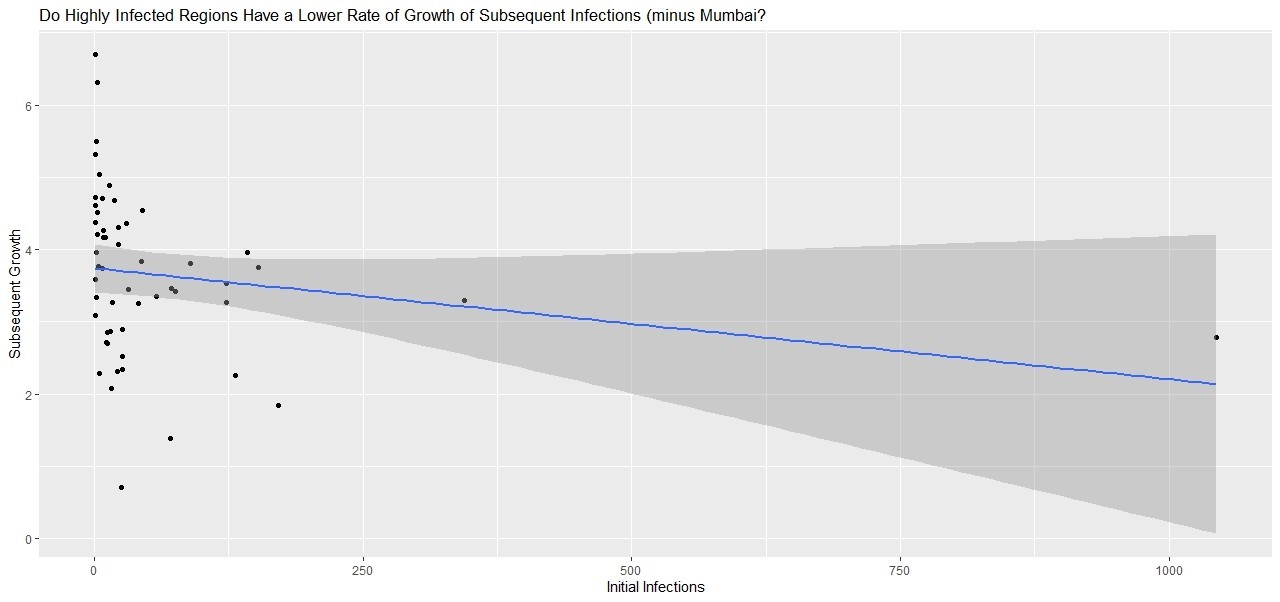

The downward relationship still persists, but again seems to be driven by a single outlier with more than 1000 initial infections. The next graph examines what happens if we drop this outlier as well.
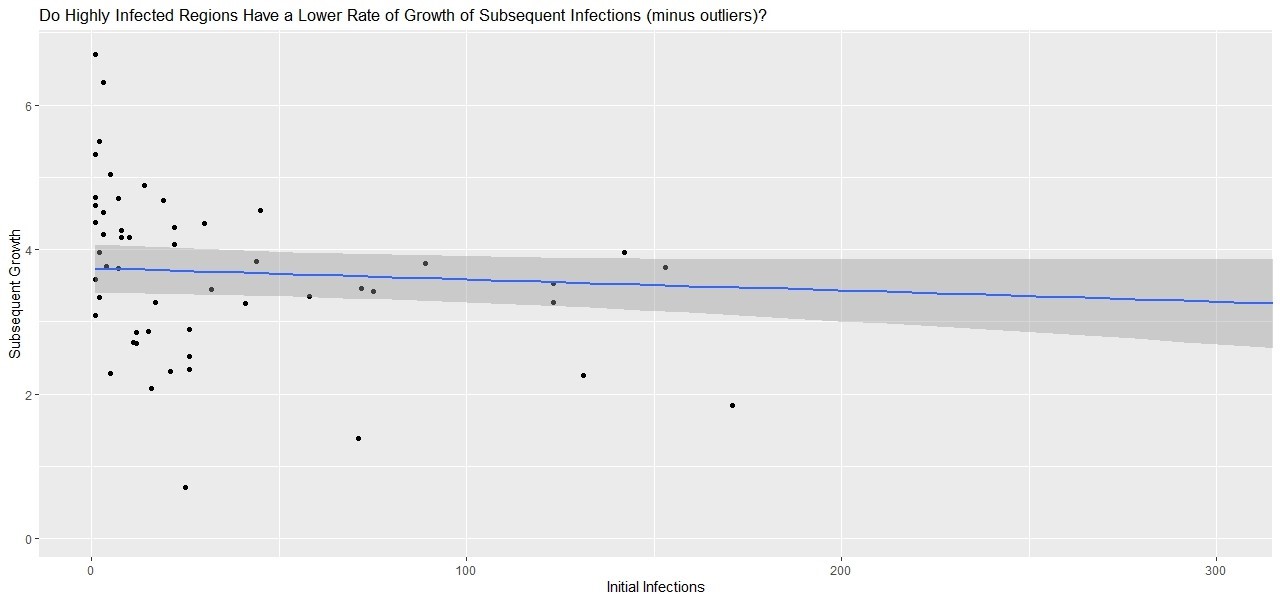

As one can see, the negative relationship between initial infections and subsequent growth rate of cases more or less disappears once we drop the two outliers of Mumbai and Pune Municipal Corporation areas. Thus, there is isn’t much statistical evidence to say that the locus of new infections has moved from the regions of initial high infections to regions of initial low infections. Areas that had a high rate of infection growth at the end of May also have a high rate of infection growth at the end of June. Migrants have not changed the locus of infectivity across the state. This is the conclusion that we get if we avoid being befuddled by the data for just two cities, Pune and Mumbai.
(Neeraj Hatekar teaches Economics at Mumbai University. Views expressed are personal and do not represent the views of the University or of The Leaflet.)

